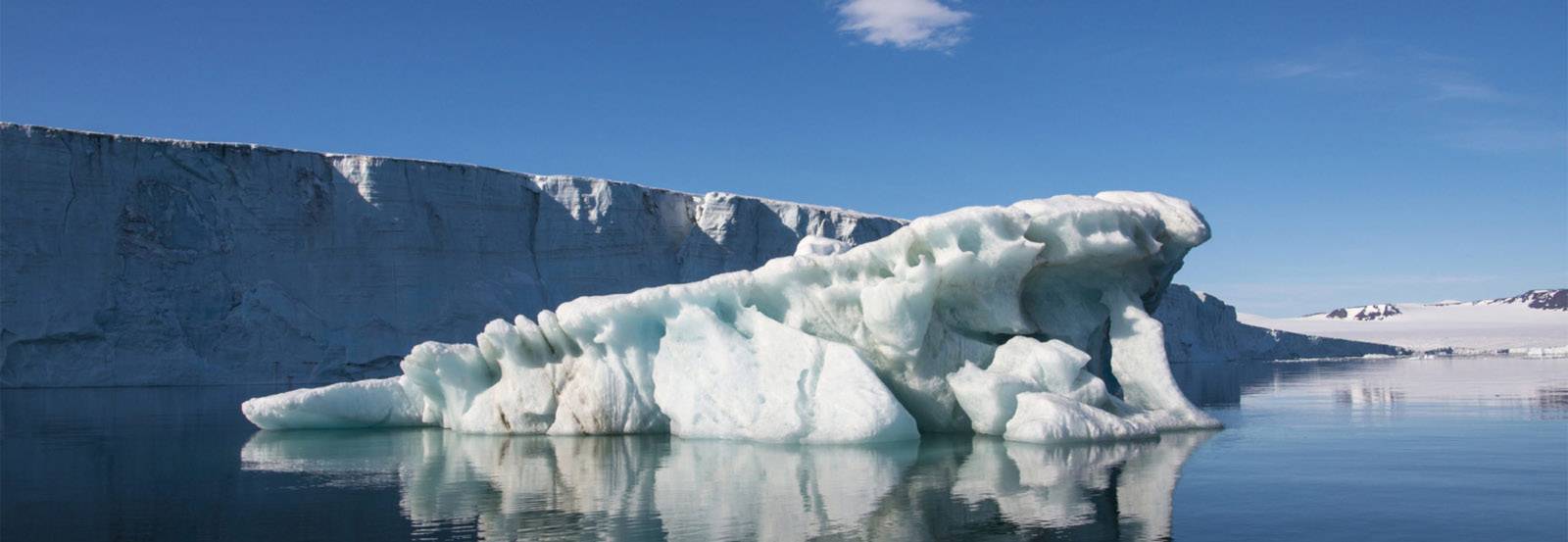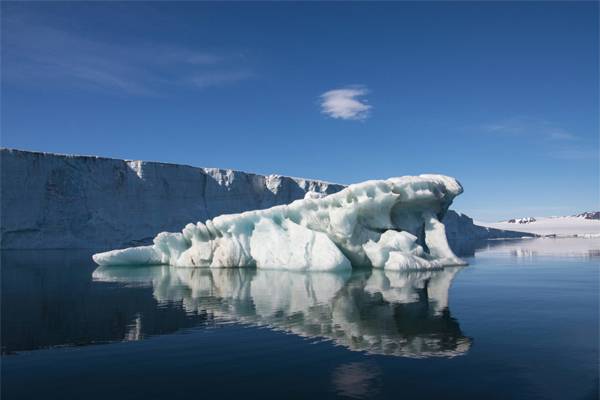ITINERARY
Day 1 Arrive Calgary
Upon arrival at Calgary, follow the signs to our pre-voyage hotel;
Delta by Marriott Calgary In-Terminal Airport Hotel located within the
airport. Should you already be in Calgary, make your way to the hotel.
Check-in is from 3:00pm.
Please visit the Aurora Expeditions hospitality desk, located in the
lobby. Our team will run through your embarkation day, answer your
questions, and give advice on the local area. They will also provide
you with cabin tags for your luggage.
Day at leisure.
Accommodation: Delta by Marriott Calgary In-Terminal Airport Hotel (or
similar)
Day 2 Embarkation,
Cambridge Bay
Meet your fellow expeditioners in the lobby to board our transfer coach
to the terminal. Please ensure that your luggage is fitted with cabin
tags clearly labelled with your name and cabin number. Any valuables or
personal items should be placed in your hand luggage, as your main bag
will be transferred separately to the ship upon arrival at Cambridge
Bay. We suggest you wear layers, take a jacket, and waterproof
clothing, as the weather in this region can be volatile. You will
receive your Aurora jacket once onboard the ship.
We board our flight bound for northern Canada, where the Sylvia Earle
awaits. Here we meet the friendly folk of Cambridge Bay, who greet us
with open arms and host our time spent in this isolated community with
enthusiasm.
In the late afternoon we board our zodiac`s to transfer to the ship,
where there is time to settle into your cabin before our important
safety briefings. This evening, meet your expedition team at the
Captain`s Welcome Dinner.
Days 3–6
Expedition cruising
NOTE: In true expeditionary style, our itinerary for the following days
is heavily dependent on unpredictable sea ice. The following places are
where we hope to visit.
Prince Leopold Island
On the
southern side of Lancaster Sound from Beechey Island lie the towering
bird cliffs of Prince Leopold Island, a historic site where in 1848,
English explorer James Clark Ross overwintered during the search for
the missing Franklin expedition. Prince Leopold Island is the most
important bird sanctuary in the Canadian Arctic, with approximately
500,000 birds nesting here in summer. Ringed seals are often spotted on
the sea ice around the island and polar bear often lurk nearby. The
shallow gravel beds attract beluga whales, who come to moult in this
part of the Arctic each summer.
Cunningham Inlet
On the north coast of
Somerset Island, when factors such as weather and whale behaviour
align, you might see the amazing spectacle of hundreds of beluga whales
shedding their skin on shallow sandy banks. The local scenery makes for
excellent guided walks, where waterway trails lead to waterfalls and
higher ground
Prince Regent Inlet, Fort Ross
Sailing down the east
coast of Somerset Island, you might spot beluga whales and narwhals as
they feed on the large numbers of arctic char that enter Creswell Bay
in late summer. An important bird area, the bay also attracts such
species as black-bellied plovers, king eiders and white-rumped
sandpipers. At Fort Ross, see an abandoned Hudson`s Bay Company trading
outpost founded in 1937, which closed in 1949 because supply ships
could not get through the thick sea ice. Enjoy guided walks on the
tundra.
Bellot Strait
A deep and windy waterway
bordered by steep slopes, Bellot Strait is characterised by strong,
swirling, tidal currents that require navigation to be undertaken close
to times of slack water (four times a day). Point Zenith, the most
northern continental point of the Americas is located in the strait.
NOTE: Due to
swirling currents up to 10 knots, Bellot Strait is better transited
during eastbound voyages because if it is blocked, there is the
alternative to continue north through Peel Sound. On a westbound
voyage, it would be necessary to make a long detour back north through
Prince Regent Inlet.
Coningham Bay
Across from Victoria
Strait, Coningham Bay lies on the shores of Prince of Wales Island.
This is a polar bear hotspot where the majestic creatures come to feast
on beluga whales often trapped in the rocky shallows at the entrance to
the bay. It is not unusual to find the shoreline littered with whale
skeletons and very healthy-looking polar bears!
King William Island
In 1859, a Franklin
expedition tent camp was discovered at Cape Felix. Remains attributed
to the Franklin expedition have been found at 35 locations on King
William Island and on nearby Adelaide Peninsula. South of Cape Felix,
in Victoria Strait, we hope to visit Victory Point and get close to
where the HMS Erebus and HMS Terror were abandoned in 1848.
Days 7-8 Beechey Island,
Devon Island, Lancaster Sound
At a latitude almost 75° degrees north, we are now truly in the
High Arctic. Here, nutrient-rich waters support an abundance of
wildlife. Devon Island is the largest uninhabited island on earth and
features stunning geology, with flat-topped mountains and glacial
valleys giving Devon Island its unique character.
At the western end of Devon Island lies Beechey Island, where we plan
to land. Named after Frederick William Beechey, the island is one of
Canada`s most important arctic sites and is a designated Canadian
National Historic Site. During the Franklin expedition of
1845–46, Franklin attempted to sail through the Northwest
Passage with HMS Erebus and HMS Terror, with perilous results
– three of his men are buried here. Roald Amundsen landed at
Beechey Island in 1903, during the first successful voyage by ship to
fully transit the Northwest Passage from the Atlantic Ocean to the
Pacific Ocean
We hope to visit Dundas Harbour to enjoy offers walks on undulating
tundra, and perhaps some birdwatching. Other possible places that we
might visit include Croker Bay and Maxwell Bay. A dilapidated Royal
Canadian Mounted Police outpost and remnants of a Hudson`s Bay Company
trading post can be found here. In the bay, walruses are often present.
Days 9-11 Baffin Island
The east coast of Baffin Island features hidden bays that are feeding
grounds for bowhead whales and where glaciers calve into the sea. Sail
along inlets and fjords surrounded by towering mountains that feature
impressive geology. Some of the places that we may visit include: Home
Bay, Isabella Bay, Sillem Island, John Ford Fjord, Sam Ford Fjord and
Scott Inlet. Conditions permitting, we hope to go ashore at Pond Inlet
and be treated to a warm welcome from the local community.
Covered with mountains, icefields, steep cliffs, snowfields and
glaciers, Bylot provides nesting habitat for large numbers of
thick-billed murres and black-legged kittiwakes. We plan to sail along
the coastline of Bylot Island to enjoy the scenery birdlife.
Day 10 Sillem Island
Sail around Sillem Island, with glacial features on all sides. A slow
cruise offers the chance to see many glaciers, discharging cascades as
well as a variety of seals and other arctic wildlife.
Day 11 Isabella Bay
After a morning at sea and farther south along the east coast of Baffin
Island, we reach Isabella Bay, an important summer and autumn feeding
ground for a large population of bowhead whales.
Day 12 At Sea
We exit Canada and cross Baffin Bay to Greenland, where we may
encounter the large icebergs that Greenland is famous for. Keep watch
for whales as well as various species of seals such as ring and harp
seal. Our team of experts entertain us with informative talks about
wildlife, geology and epic tales of early explorers such as Franklin
and Amundsen.
Day 13 Qeqertarsuaq
(Disko Island)
This compelling island seems to have more in common with Iceland than
Greenland. While most of the interior is mountainous and glaciated, its
beautiful shorelines boast black sandy beaches, unusual basalt columns,
hot springs and dramatic lava formations. Zodiac cruise in Disko Bay,
which features fascinating geology. It is also hotspot for marine life
including humpback and minke whales.
Day 14 Ilulissat
Known as the "birthplace of icebergs", this region produces some of the
most dazzling icebergs found anywhere on earth. Hike to the UNESCO
World Heritage-listed Icefjord and stand in awe of its immensity.
Sermeq Kujalleq, also known as Jakobshavn Glacier, is the most
productive glacier – not only in Greenland but the entire
Northern Hemisphere. It produces 20 million tonnes of ice each day, all
floating into the Ilulissat Icefjord and Disko Bay. Conditions
permitting, enjoy a Zodiac cruise at the mouth of the fjord and kayak
through sea ice and icebergs. An optional 90-minute helicopter flight
over the icefjord is a truly once-in-a-lifetime experience.
Optional helicopter flight (90 mins): this excursion is the only way
you can get close to the gigantic glacier. The 12-seater helicopter
departs from Ilulissat Airport and sweeps over hills, lakes and ice
fjords. Land on the mountain at Kangia, in the middle of the preserved
area, where you can revel in the incredible surroundings. On the return
flight to Ilulissat, fly above the edge of the glacier with
breathtaking views of the massive icebergs drifting in the fjord. The
views of some of the largest icebergs that become stranded on a moraine
underneath the water, just outside the town, offers a wonderful finale
to this excursion. (Additional charge applies). Please note this
excursion requires a minimum of 8 people to operate.
Day 15 Sisimiut
Greenland`s second largest town, Sisimiut is located approximately 54
kilometres (33.5 miles) north of the Arctic Circle, meaning that during
summer, you can experience the midnight sun here. The town is famous
for the old blue church with the gate made of whale bone. In the cosy
museum next door to the church, you will find an excellent
reconstruction of an Inuit turf house as well as exhibits of local
history and early life in Greenland.
Sisimiut offers hiking trails with various degrees of difficulty. The
easier trails take you through the town itself, its outskirts and into
the mountains, where you will find spectacular vantage points.
Some 4,500 years ago, the Saqqaq culture arrived from Canada and
settled in the area. They lived here for approximately 2,000 years,
after which they mysteriously disappeared from the area. The Dorset
culture arrived around 500 CE and stayed until the 1200s until they
were replaced by the Thule culture, and today, the majority of the
population of Sisimiut are descendants of the Thule culture.
Day 16 Disembark in
Kangerlussuaq. Fly to Toronto
After an overnight sailing along Søndre
Strømfjord we arrive in Kangerlussuaq, where we disembark
for the final time. We’ll feast on a taste of Greenland at
the lakeside Roklubben restaurant, where we enjoy a BBQ lunch before
joining our guided tour to Reindeer Glacier. Greenland`s "ice sheet"
covers 80 percent of the surface of the country. Reindeer Glacier,
which stands as a 60-metre-high ice wall, offers visitors a clear
contrast between land and ice. We travel on a tundra coach, looking for
reindeer and musk oxen, while we hear stories of the area from our
local guide. Once at the glacier we will walk parallel to its edge to
discover it many moods and angles.
In the late afternoon we return to Kangerlussuaq airport to board our
charter flight to Canada. Upon arrival at Toronto we are transferred in
private coaches to our hotel for an overnight stay.
Accommodation: Sheraton Toronto Airport Hotel (or similar)
Day 17 Depart Toronto
After breakfast, check out of your room and continue your journey.






